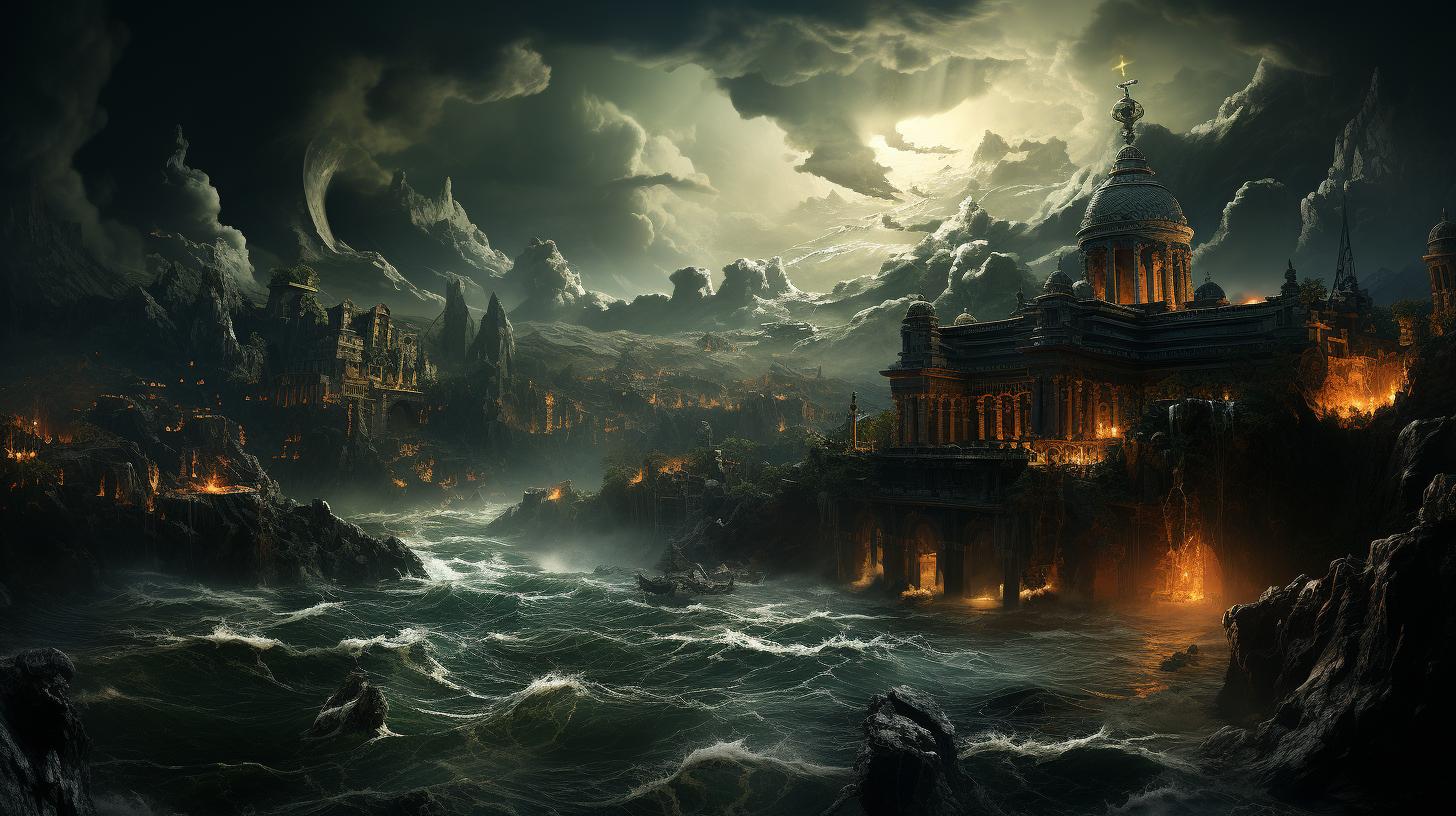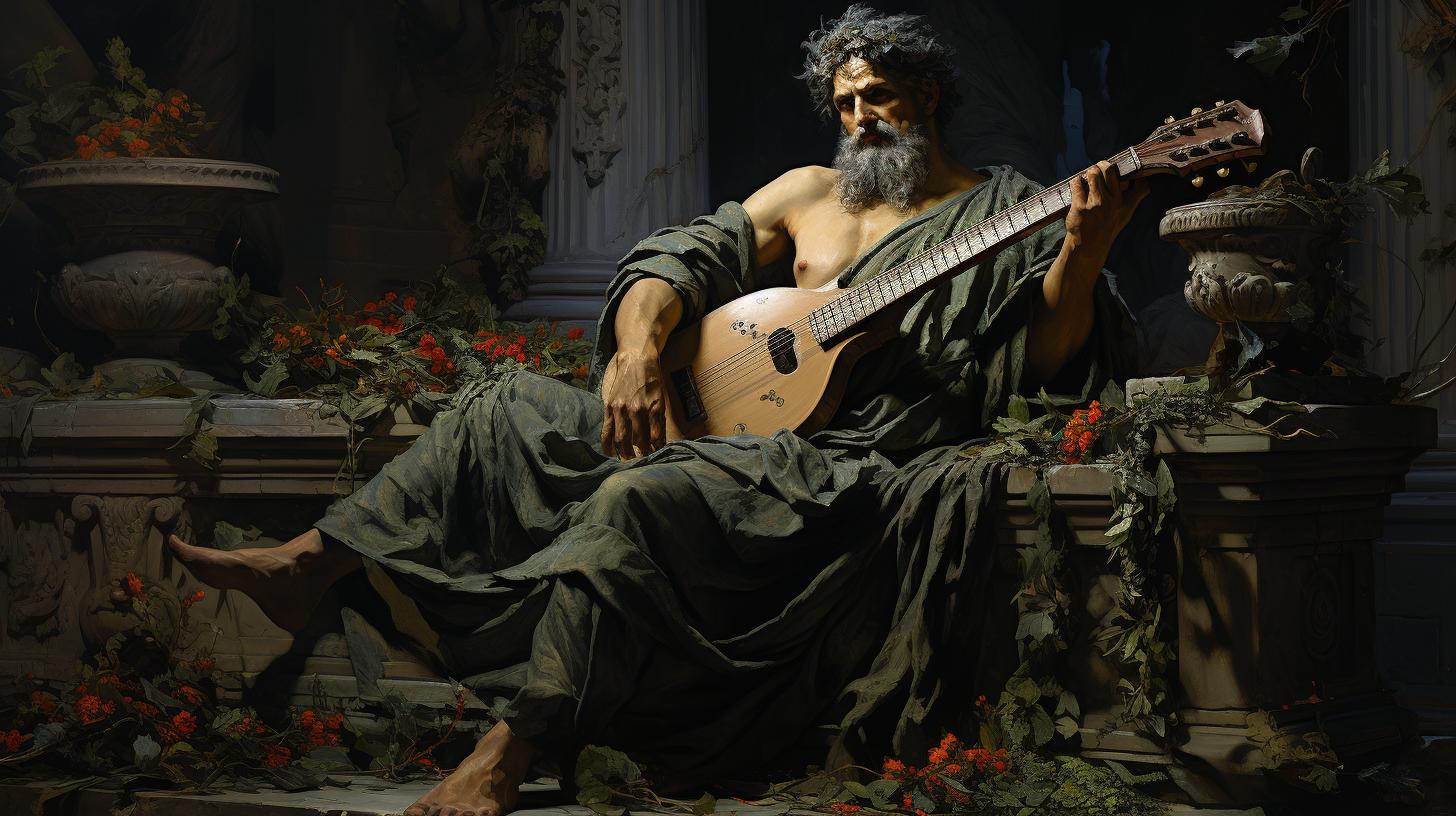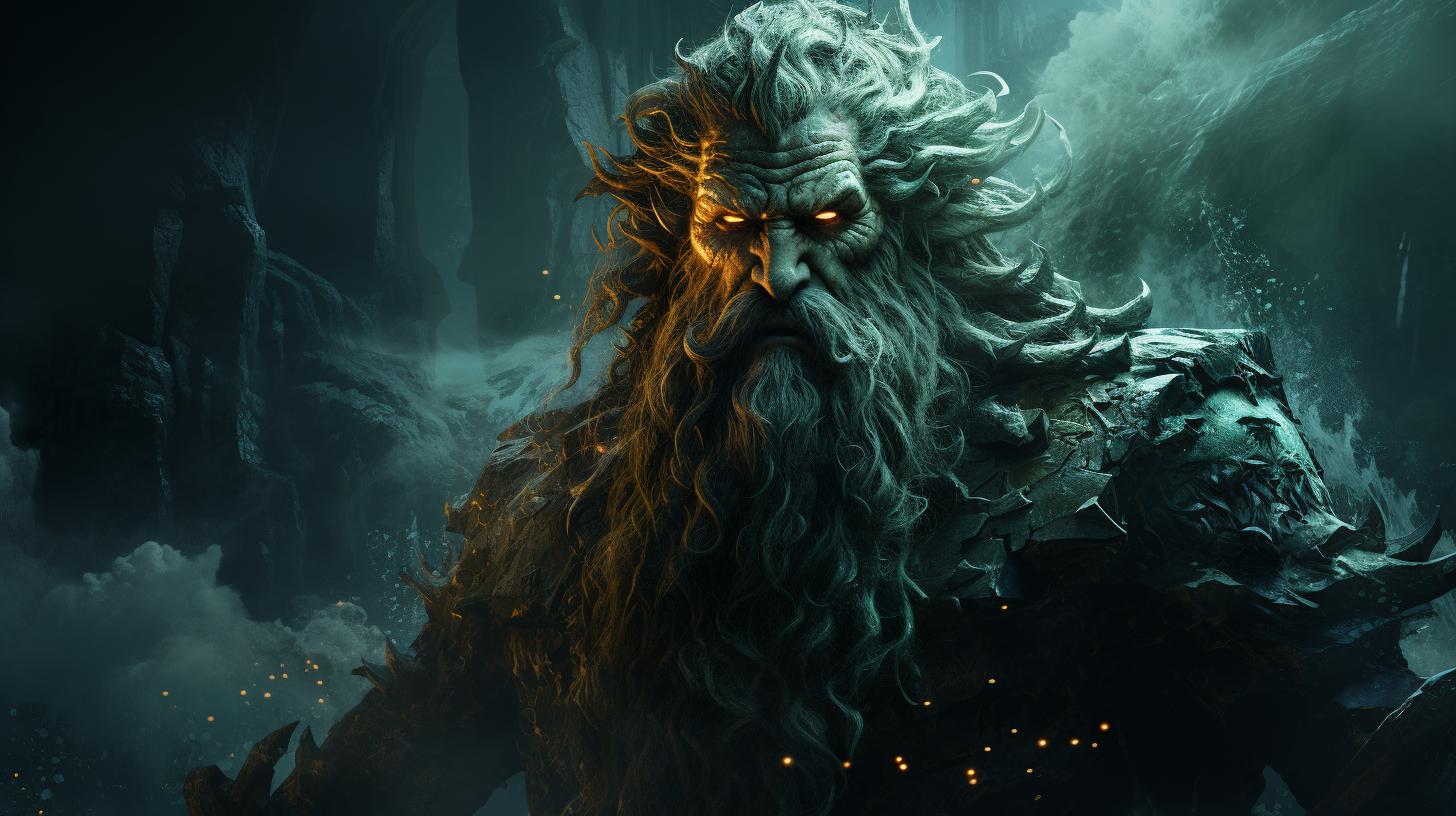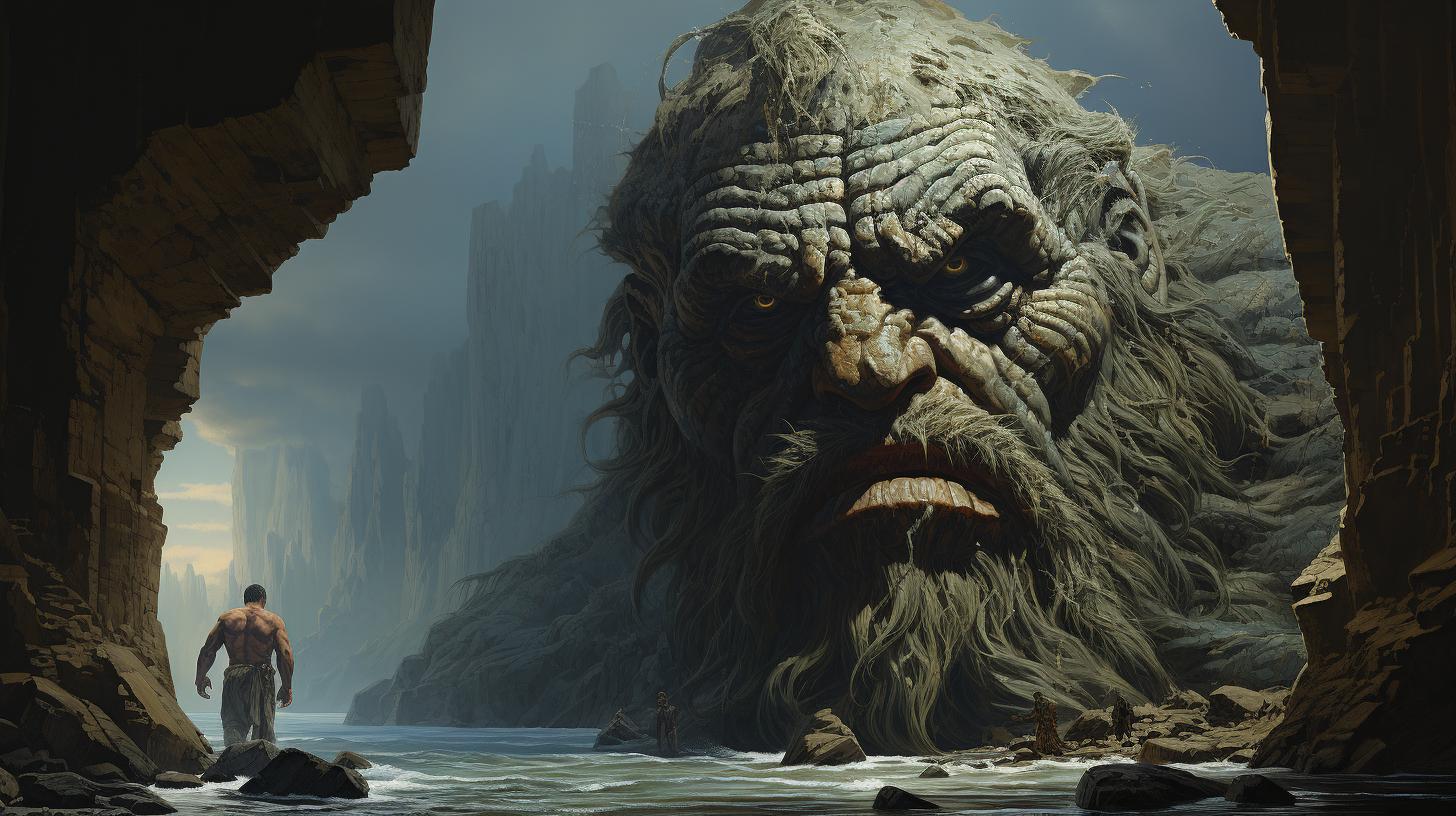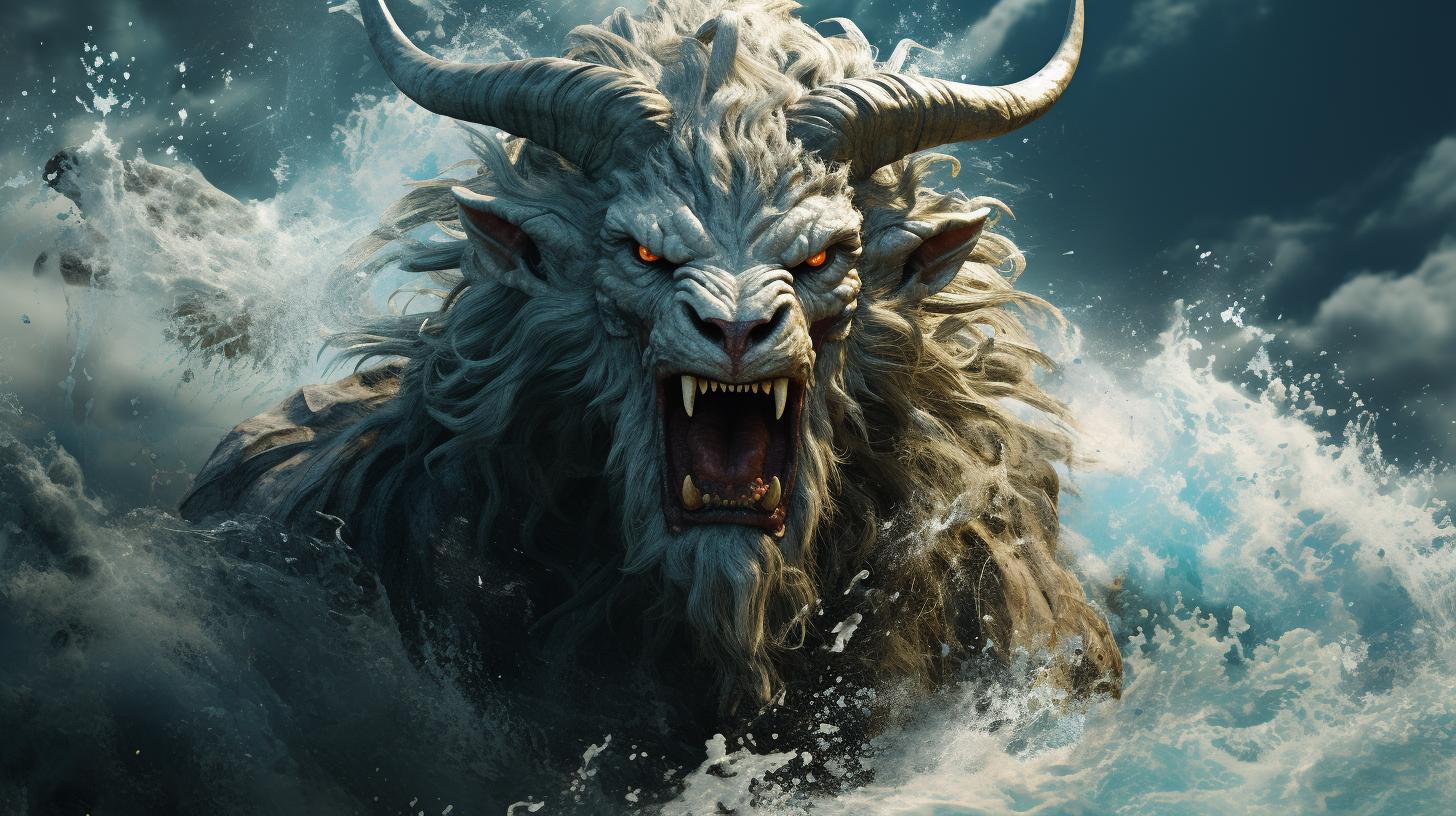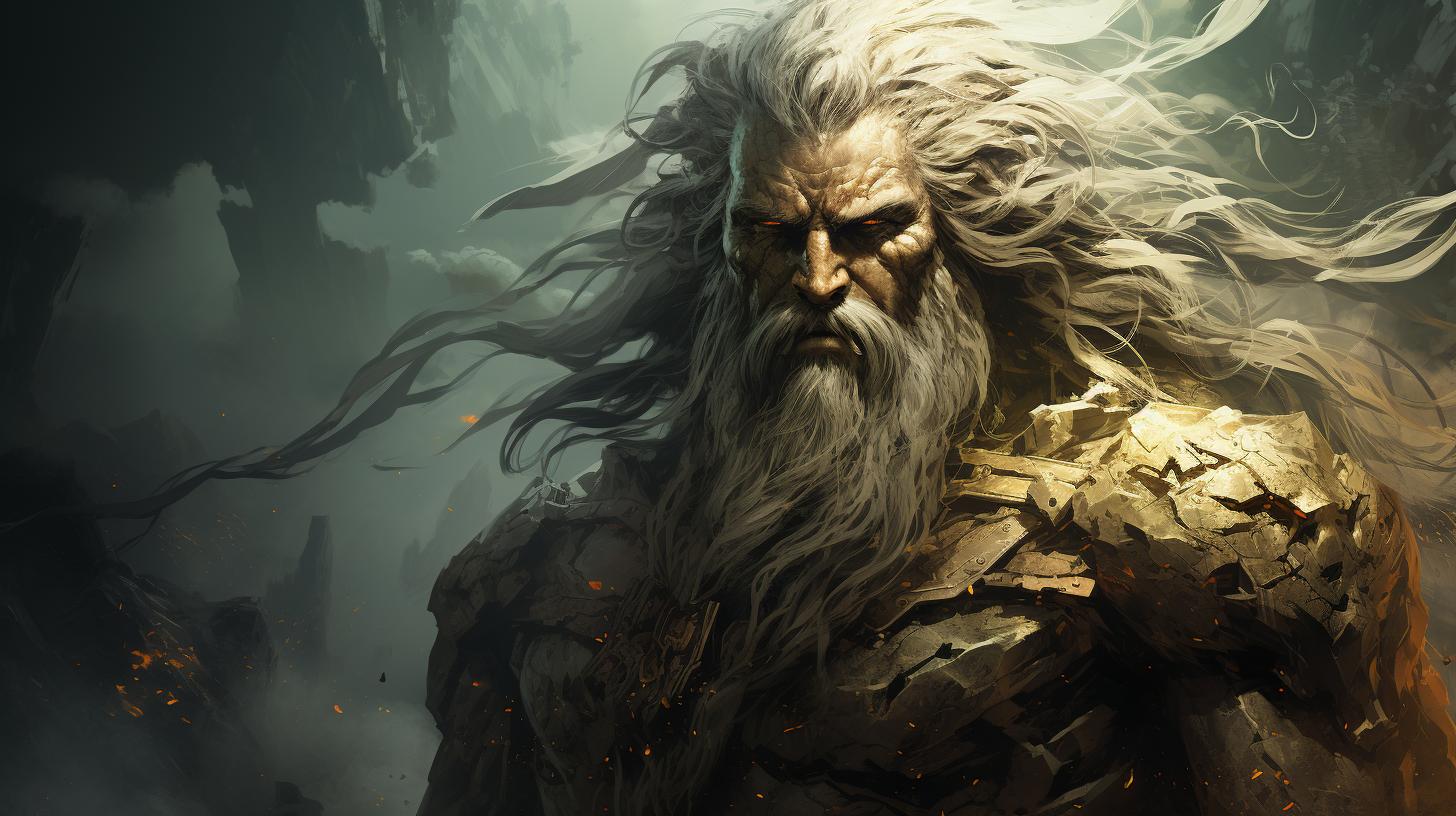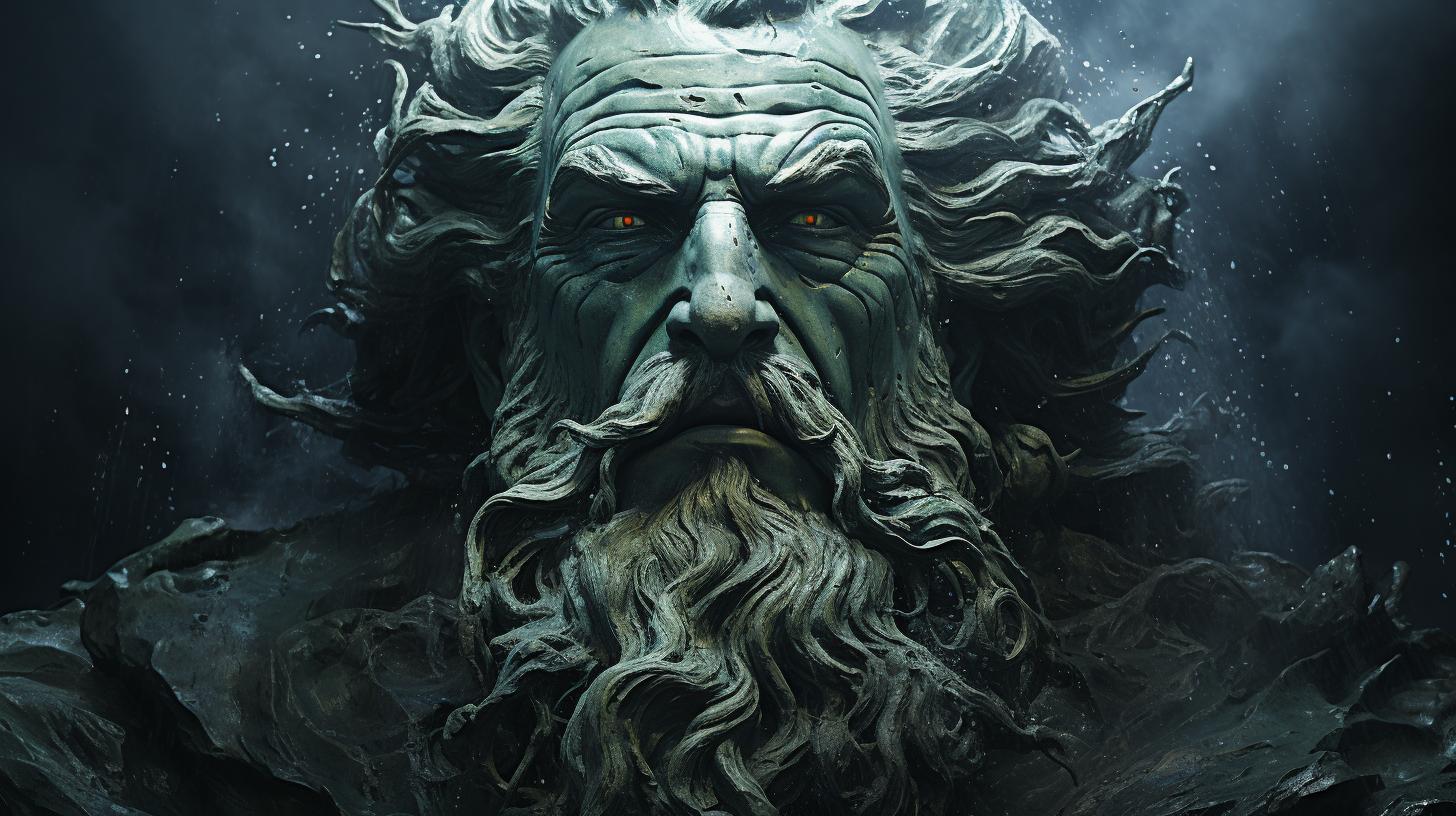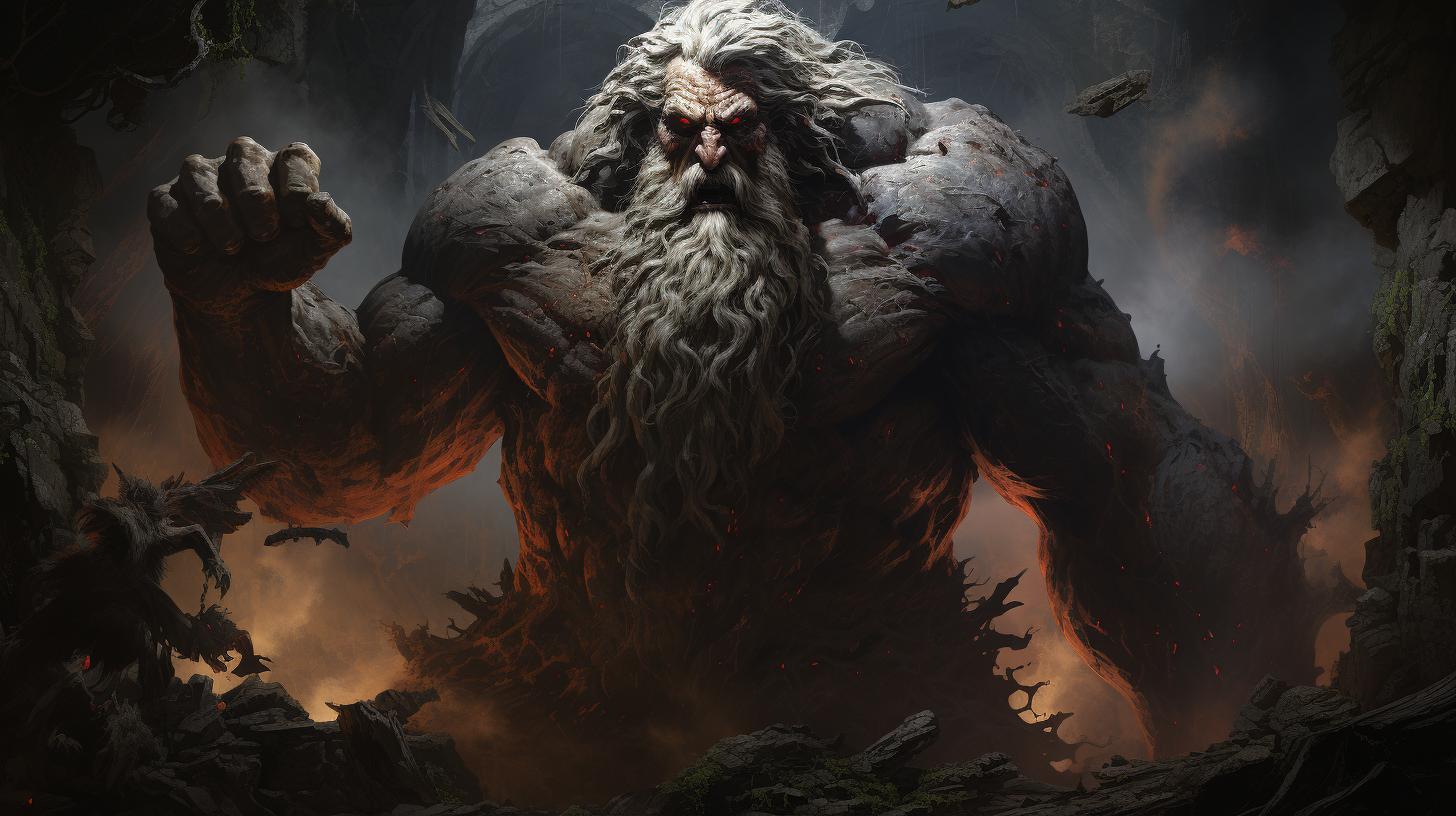Who is Scylla in Greek Mythology: A Terrifying Monster of Ancient Greece
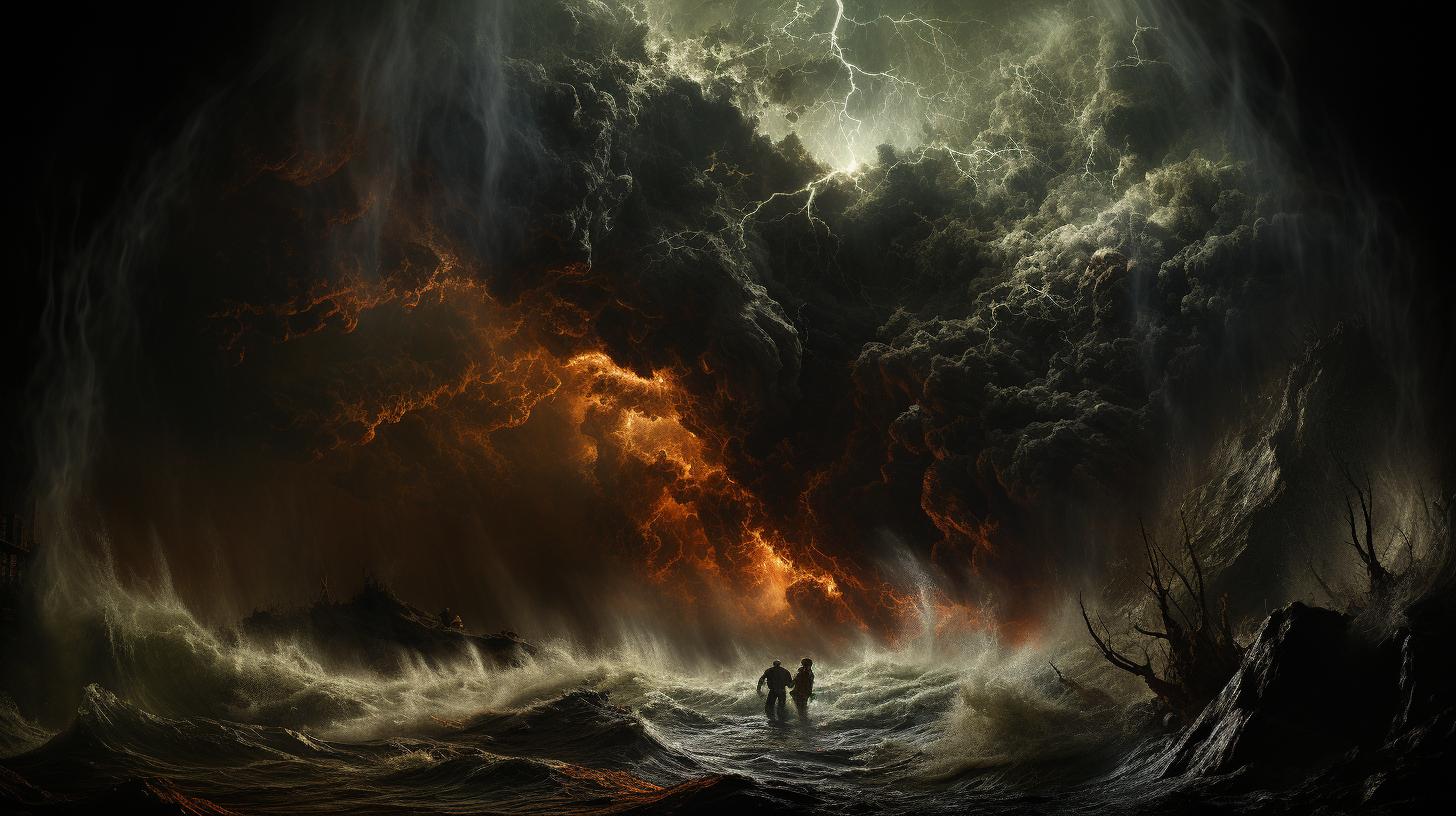
Scylla, a legendary and monstrous creature in Greek mythology, is widely known for her appearances in ancient texts and tales. Sources describe her inhabiting a narrow water passage, positioned across from her counterpart Charybdis.
Sailors attempting to avoid Charybdis would risk passing too close to Scylla, and vice versa. Scylla’s origins and parentage vary among different authors and poems, adding to the mystery surrounding her.
She is depicted with terrifying features, and her presence in the Odyssey of Homer highlights the dangers faced by Odysseus. Scylla’s story continues to inspire artists and captivate readers today.
The Origins and Parentage of Scylla
Scylla, the legendary creature of Greek mythology, has a complex and varied lineage that adds to her enigmatic nature. Different authors and poems present differing accounts of her parentage, deepening the mystery surrounding her origins.
Let’s explore the various possibilities:
Crataeis as the Mother of Scylla
In several texts, such as Homer’s Odyssey, Ovid’s works, Apollodorus’ writings, Servius’ commentaries, and a commentator of Plato, Crataeis is noted as the mother of Scylla. These sources mention her in connection to Scylla’s birth and existence.
The exact relationship between Crataeis and Scylla remains a topic of speculation.
Possible Fathers of Scylla
While Crataeis is mentioned consistently as Scylla’s mother, the accounts of her father vary. Some authors suggest Trieno or Phorcus as potential fathers, while others allude to Tyrrhenus or Phorcus. The uncertainty surrounding Scylla’s paternity further adds to the intrigue of her origins.
Hécate as a Potential Mother of Scylla
In certain narrative traditions, Hécate is mentioned as a possible mother of Scylla. Hécate, a powerful goddess associated with magic, witchcraft, and crossroads, adds another layer of complexity to Scylla’s parentage.
The inclusion of Hécate as a potential mother fuels the mythology and ambiguity surrounding Scylla’s origins.
These various accounts of Scylla’s parentage create a web of uncertainty, contributing to the mystique surrounding her existence.
The mixture of sources and the absence of a definitive answer only deepen our fascination with this legendary figure of Greek mythology.
The Transformation of Scylla into a Monster
The tale of Scylla’s transformation into a terrifying monster is a prominent aspect of her mythology. This transformation is depicted in two different variations, emphasizing the tragic circumstances that led to her monstrous form.
Circe’s Jealousy and the Tragic Transformation
One version of the story suggests that Scylla was originally a beautiful nymph. However, her beauty caught the attention of the enchantress Circe. Driven by jealousy, Circe used her magic to transform Scylla into a horrifying monster.
This tragic transformation forever altered Scylla’s fate and appearance.
Scylla’s Monstrous Birth in a Monstrous Family
Another account tells of Scylla being born into a family of monsters. The details regarding her birth are varied, with different authors and texts offering various versions. However, it is agreed upon that Scylla’s lineage contributed to her monstrous nature, making her an integral part of a family with menacing traits and characteristics.
The transformation of Scylla into a monster showcases the themes of jealousy and tragedy prevalent in Greek mythology. Whether due to the envy of Circe or her monstrous lineage, Scylla’s transformation serves as a cautionary tale of the consequences that arise from such circumstances.
Description of Scylla in Greek Mythology
Scylla, the monstrous creature of Greek mythology, has been depicted in various ways throughout ancient texts and artworks. Her appearance is subject to variation, but common descriptions portray her with twelve dangling feet, six long necks, and terrifying heads adorned with three rows of sharp teeth.
Some accounts even compare her voice to the barking of dogs. In classical art, she is often depicted as a marine goddess with a fish tail and the front parts of dogs.
Varying Depictions of Scylla’s Appearance
The depictions of Scylla’s appearance in Greek mythology differ across different texts and artistic representations. These descriptions contribute to the overall intriguing and horrifying image of Scylla. While her monstrous form remains consistent, the details and features surrounding her can vary slightly.
Swift and Terrifying
Scylla’s monstrous attributes serve to strike fear into the hearts of sailors who dare to venture near her treacherous domain. Her twelve dangling feet and six long necks enable her to snatch unsuspecting sailors from passing ships with ease.
The three rows of sharp teeth emphasize the peril faced by those who encounter her, as well as the monstrous nature of her being.
Artistic Representations: Classic to Medieval
Artists throughout history have been captivated by the terrifying allure of Scylla, resulting in numerous depictions of her in various art forms. From renowned painters like Agostino Carracci and Filippo Lauri to medieval frescoes like the one found in the Carolingian monastery of Corvey, Scylla’s presence has been immortalized in visual art.
These artistic representations provide insight into how Scylla’s appearance has evolved and inspired human imagination through the ages.
- Agostino Carracci, an Italian Baroque painter, depicted Scylla in his artwork with her monstrous form emerging from the water, surrounded by chaos and destruction.
- Fillipo Lauri, an Italian painter, conveyed Scylla’s terrifying nature in his artistic portrayal, focusing on her snatching sailors from their ships and the fear in their faces.
- The fresco at the Carolingian monastery of Corvey provides a glimpse into medieval interpretations of Scylla, with her monstrous form depicted alongside other mythical creatures.
Scylla’s depiction in art serves as a visual representation of her terror and the enduring fascination she evokes in both ancient and modern audiences.
Scylla in Homer’s Odyssey
The presence of Scylla in Homer’s Odyssey is one of her most notable appearances in Greek mythology. During Odysseus’ journey back to Ithaca, Circe warns him of the dangers he will face, specifically mentioning the rocks where Scylla resides and the treacherous Charybdis.
Odysseus is faced with a difficult decision, as he must choose between the two equally deadly threats. He decides to navigate closer to Scylla in order to avoid the destructive force of Charybdis, but this choice comes at a great cost.
Circe’s Warning to Odysseus About Scylla and Charybdis
Circe explicitly cautions Odysseus about the perils of Scylla and Charybdis, highlighting the shadowy rocks where she dwells and the formidable danger posed by Charybdis. Her warning serves as a reminder of the challenges and sacrifices Odysseus must face on his journey.
Odysseus’ Encounter with Scylla and the Loss of His Men
Despite Circe’s warning, Odysseus finds himself in a harrowing encounter with Scylla. As he steers his ship closer to Scylla to avoid Charybdis, six of his crew members fall victim to the terrifying monster’s attack.
This loss underscores the ruthless and devastating nature of Scylla, as well as the tragic consequences of Odysseus’ decision.
The presence of Scylla in Homer’s Odyssey is one of her most notable appearances in Greek mythology.
During Odysseus’ journey back to Ithaca, Circe warns him of the dangers he will face, specifically mentioning the rocks where Scylla resides and the treacherous Charybdis. Odysseus is faced with a difficult decision, as he must choose between the two equally deadly threats.
He decides to navigate closer to Scylla in order to avoid the destructive force of Charybdis, but this choice comes at a great cost.
Circe’s Warning to Odysseus About Scylla and Charybdis
Circe explicitly cautions Odysseus about the perils of Scylla and Charybdis, highlighting the shadowy rocks where she dwells and the formidable danger posed by Charybdis.
Her warning serves as a reminder of the challenges and sacrifices Odysseus must face on his journey.
Odysseus’ Encounter with Scylla and the Loss of His Men
Despite Circe’s warning, Odysseus finds himself in a harrowing encounter with Scylla. As he steers his ship closer to Scylla to avoid Charybdis, six of his crew members fall victim to the terrifying monster’s attack.
This loss underscores the ruthless and devastating nature of Scylla, as well as the tragic consequences of Odysseus’ decision.
Scylla in Greek Mythology and Beyond
Scylla, the mythical creature of Greek mythology, extends her influence beyond the ancient tales. Her association with the Strait of Messina, situated between Calabria and Sicily in Italy, has left a lasting mark.
The coastal city of Scilla in Calabria even takes its name in honor of this legendary figure.
Scylla’s Association with the Strait of Messina
The presence of Scylla in the Strait of Messina adds an element of intrigue to the area’s maritime history and geography. Located in the southern part of Italy, this narrow passage has long been known for its treacherous waters, believed to be guarded by Scylla herself.
According to mythology, sailors had to navigate carefully between Scylla and her counterpart Charybdis to avoid certain destruction. The rocks where Scylla resided were said to cast sinister shadows, and Charybdis posed an equally menacing threat with her powerful whirlpool.
Scylla’s association with the Strait of Messina not only adds to the region’s allure but also serves as a reminder of the dangers faced by ancient seafarers who braved these waters.
The Symbolism of Scylla: Between Two Equally Dangerous Situations
The tale of Scylla embodies the difficult choices we often confront in life when caught between two equally perilous situations. The expression “between Scylla and Charybdis” has become synonymous with the need to make decisions when faced with two unfavorable options.
Scylla’s story serves as a cautionary tale about the consequences of envy and betrayal. Her tragic transformation from a beautiful nymph into a monstrous creature highlights the destructive power of jealousy and its potential to destroy relationships and lives.
Through visual depictions, literature, and symbolism, Scylla continues to captivate artists and readers alike. From classical representations to medieval frescoes, her image has endured throughout history, evoking a sense of awe and fascination.
Today, Scylla’s legacy remains influential in popular culture, inspiring contemporary adaptations and interpretations. The enduring fascination with this captivating figure demonstrates the timeless appeal and relevance of Greek mythology’s enduring tales.
- Scylla’s association with the treacherous Strait of Messina
- The symbolism of making choices between two equally dangerous situations
The tales of Scylla continue to captivate and intrigue, reminding us of the enduring power of ancient myths and their impact on our modern world.
Scylla in Popular Culture and Contemporary Influences
Scylla’s presence in Greek mythology has had a significant impact on popular culture and continues to be a source of inspiration in various artistic mediums and contemporary society. Her portrayal in art, literature, and symbolism reflects the enduring fascination with her character.
Scylla’s Influence on Art, Literature, and Symbolism
Artists, writers, and poets have been captivated by Scylla’s mysterious and monstrous nature, often incorporating her into their works. From ancient times to the present day, Scylla has been featured in countless paintings, sculptures, and illustrations.
Renowned artists such as Agostino Carracci, Fillipo Lauri, Salvator Rosa, and Bartholomäus Spranger have depicted her in their artworks, capturing the essence of her terrifying image.
In the realm of literature, Scylla’s presence is felt in various retellings and adaptations of Greek mythology.
Her transformation into a monster, the dangers she posed to sailors, and her encounter with Odysseus in the Odyssey have inspired numerous novels, poems, and plays. Contemporary authors continue to weave Scylla’s character into their stories, exploring themes of transformation, monstrousness, and the consequences of envy and betrayal.
The symbolism of Scylla has also extended beyond the realm of art and literature. She has become a powerful metaphor for making difficult choices between two equally perilous situations. The expression “between Scylla and Charybdis” is often used to depict the predicament of having to choose between two unfavorable options.
Scylla’s symbolic presence in contemporary society continues to resonate with individuals navigating challenging circumstances.
The Enduring Fascination with Scylla in Modern Society
Despite the passage of time, Scylla’s allure remains strong in modern society. Her enduring fascination can be attributed to the timeless themes and lessons embedded within her mythological tale. The story of Scylla serves as a cautionary reminder of the destructive consequences that envy and betrayal can unleash upon individuals and the world around them.
Scylla’s presence in popular culture can also be seen in various forms, including films, television shows, video games, and even merchandise. She has become a recognizable figure, often associated with the concepts of danger, transformation, and the complexity of choices.
Furthermore, Scylla’s association with the Strait of Messina and the coastal town of Scilla in Calabria, Italy, continues to draw attention and inspire travel enthusiasts. Visitors are fascinated by the mythological connection to the ancient creature and the opportunity to explore the picturesque region.
In conclusion, Scylla’s influence on popular culture and contemporary society is a testament to the enduring power of Greek mythology. Through art, literature, symbolism, and modern adaptations, her intriguing character and cautionary tale continue to captivate audiences and spark discussions about the complexities of human nature.
.

